Those Blue Remembered Hills of the Land of Lost Content

I like rocks. Big rocks, little rocks, smooth rocks, rough rocks, I like ’em all. But, as you might have guessed from my sophisticated method of classification, I don’t know much about them. Living in London there isn’t much chance of getting a great deal of hands on knowledge of them, since the city sits atop deep layers of clay laid down some 50 million years when the land was sea (if the Pennines are the country’s spine, that would make Scotland the head and London the arse!). So when I learned that palaeobiologists at Oxford University’s Earth sciences department had discovered some of the earliest life yet found in rocks on the Long Mynd, my decision was made. We headed to Shropshire.
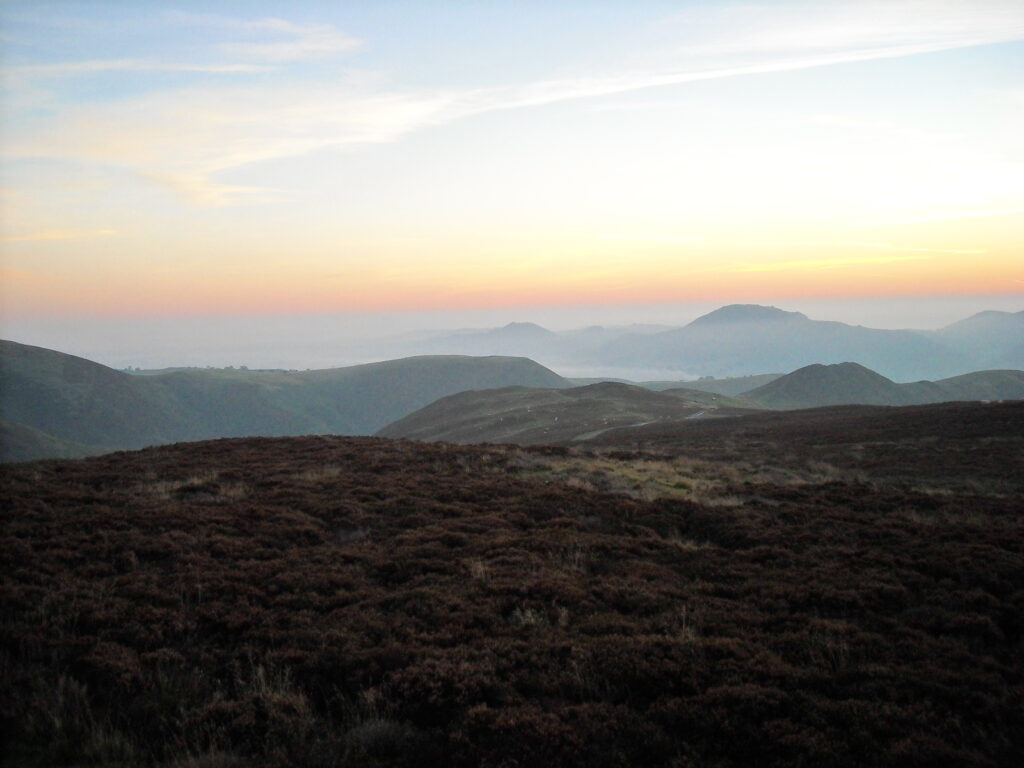
If you read guide books or tourist brochures about the Shropshire Hills, you’ll soon find out about the importance of the area for geologists. It was one of the areas where geology, a largely Victorian and British invention, made its first discoveries. No comparable area in England provides so many different rock formations. If you look at a map of Shropshire you’ll see that the hills form long, parallel ridges, rolling like breakers towards the plains eastwards: the Stiperstones, the Long Mynd, Wenlock Edge. It could almost be a green sea, with the bare backs of the Stiperstones and the Long Mynd still far out from shore, and Wenlock Edge, its tree-covered flank the foam, breaking on the beach. These long hills were formed at different times, with the Long Mynd the oldest, at 560 million years, the Stiperstones a sprightly 480 millions years old and Wenlock Edge a positively youthful 430 million.
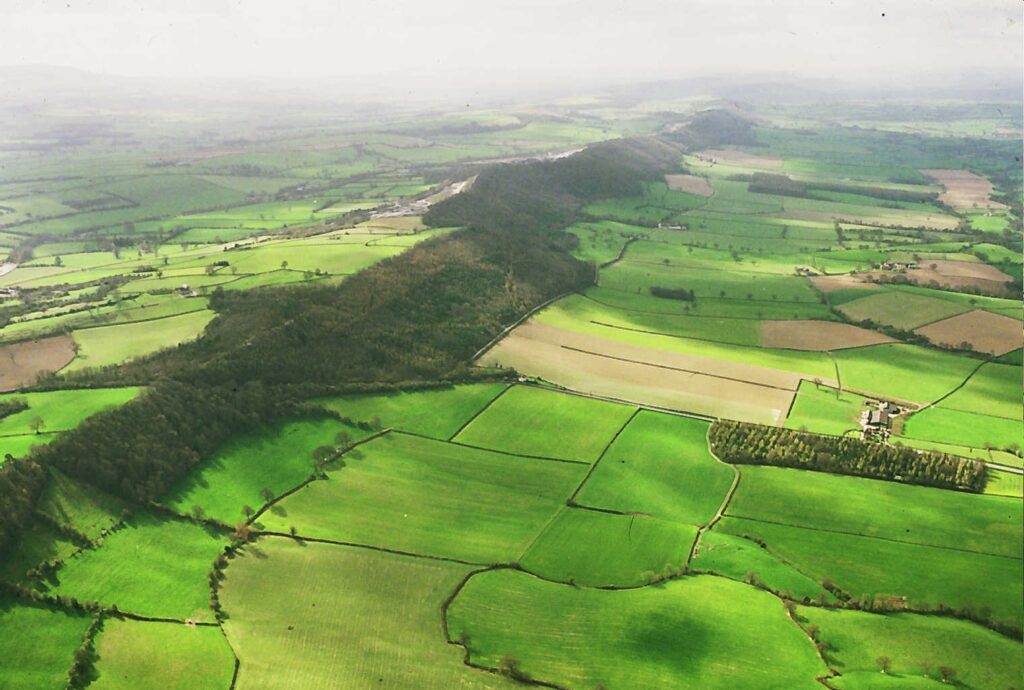
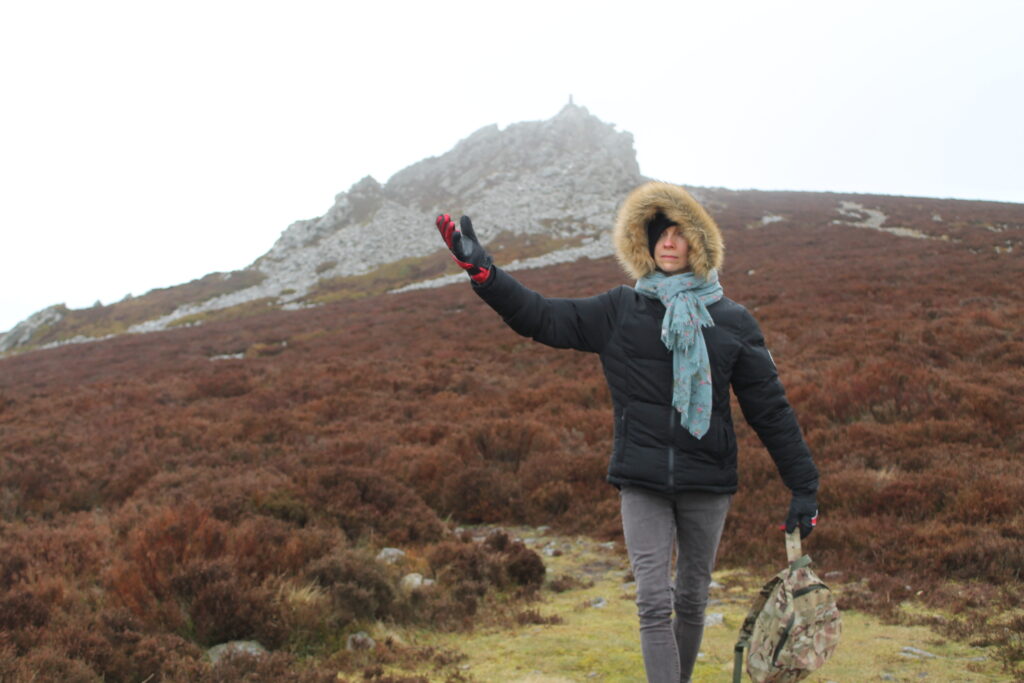
The Long Mynd, although a favourite with walkers, has received little attention from palaeobiologists since its age seemed to preclude fossils. But we’ll return to it later as, it turns out, that ain’t necessarily so. Wenlock Edge, on the other hand, was laid down by uncounted corals in a warm tropical sea after the great Cambrian explosion of life, and fossils are supposedly numerous, though I’ve never been that good at finding them. On the other hand, Charles Darwin, a native of Shrewsbury up the road, didn’t find any either, so I’m in good company. Like a receding ripple, Wenlock Edge has its own land shadow in View Edge, a parallel bed of hard limestone tilted upwards by geological forces.
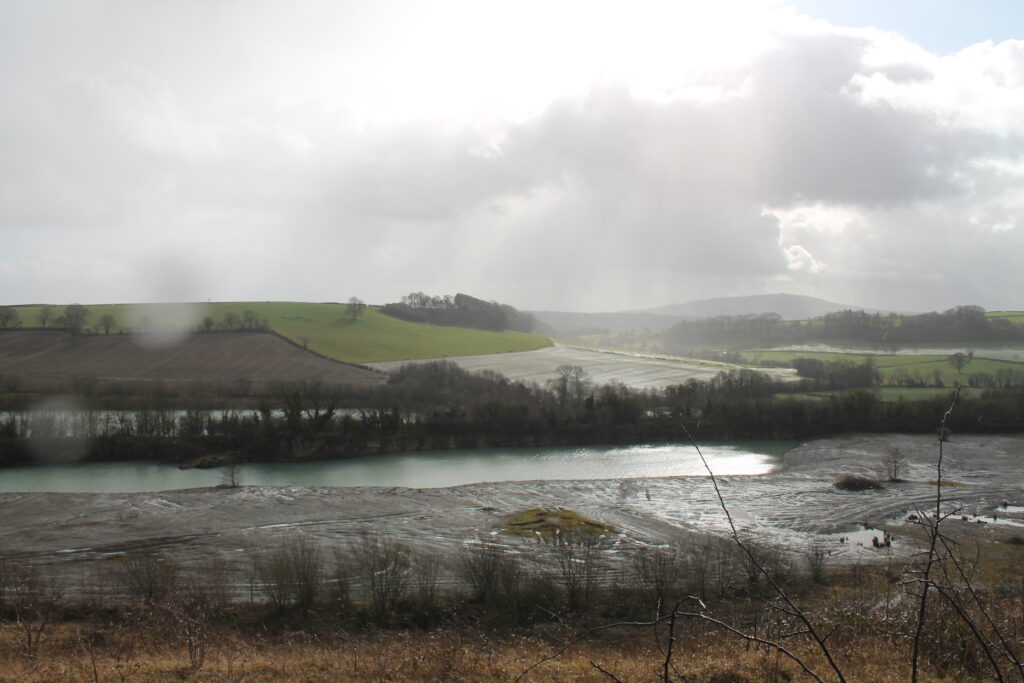
Limestone was a vital fertilizer in the days before oil-fired agriculture, and Wenlock Edge was quarried big time. Most of the quarries are closed now and the National Trust is negotiating with the operator of the last big quarry on Wenlock Edge to take over its workings as a museum and visitor centre of the area’s past. But the quarrymen did great service to geologists and palaeontologists, slicing deep into the rock and cutting back through the accumulated layers of the Edge’s earth clock. On any given day you’re still likely to find a fossil hunter bent over a shard of rock, hammer at the ready, hoping to find wonder in his hand. Fossil corals are common, as are the plant-like crinoids, brachiopods (which look similar to mussels but aren’t related) and trilobites. Not that I could make them out, even when a friendly fossil hunter attempted to show us what he was doing.

The steep western flank of the Edge is thickly wooded; a summer walk is shaded but enclosed. Maybe the best time to walk it is in winter or early spring, when you can see Ape Dale spreading out towards Caer Caradoc, Ragleth Hill and the long mountain beyond (in case you’re wondering, the dale was named for its apiaries rather than its simians).

Not far from the final working quarry is the Major’s Leap, a rare clear outlook through the trees. It’s named for Major Smallman, a Royalist who lived in nearby Wilderhope Manor. Pursued by soldiers fighting for the Parliamentary cause, he forced his horse up along Wenlock Edge until, cut off, man and horse leapt into thin air. The beast did not survive, but Major Smallman did, limping off to escape his pursuers.

Wilderhope Manor, his old home, is now a National Trust owned youth hostel and an evocative and reasonably priced place to stay. It fell into dereliction in the 19th and early 20th centuries so was spared the improvements so often foisted on Elizabethan manor houses in that time. There’s a rack above the fireplace in the main hall that was once, in more troubled times, a place to store longbows. This was border country, after all, and ‘it was customary for the English to cut off the ears of every Welshman found east of the dyke, and for the Welsh to hang every Englishman whom they found to the west of it’.
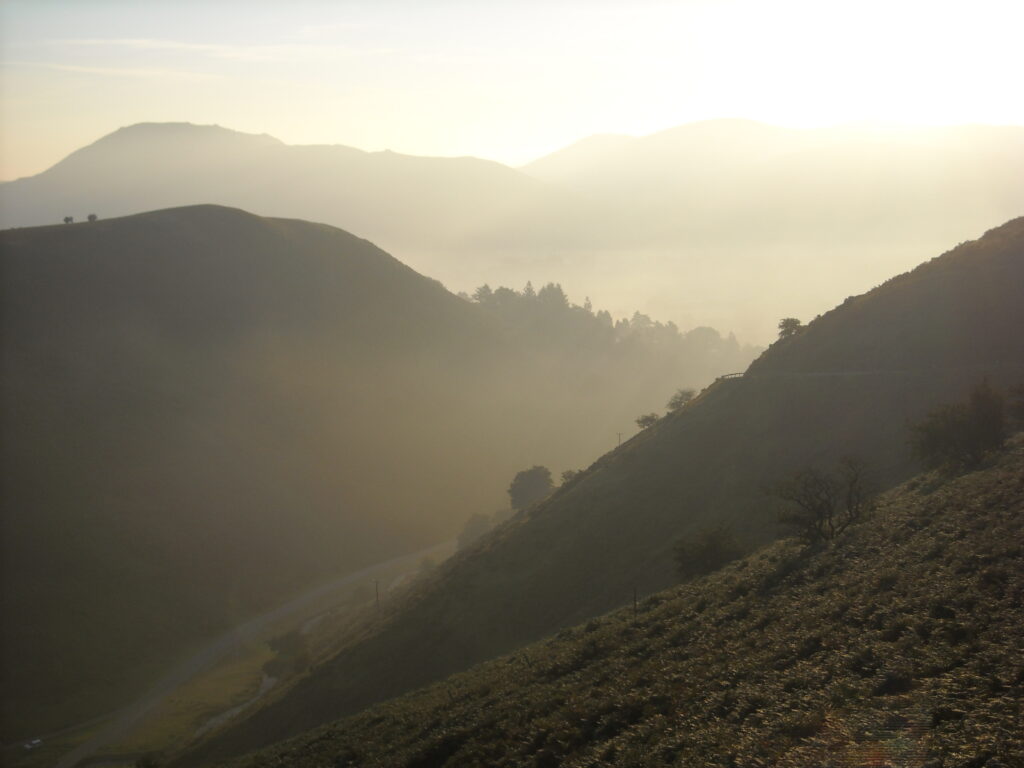
Despite my failure with Wenlockian fossils, I was still excited by the news of the finds on the Long Mynd. For a long time, the mountain was thought to be bare of fossil remains. The only structures to be found were the sinuous ridges of water over sand, just like you see today on a beach as the tide withdraws, and even more evocatively, the marks of a passing rain shower on lost beaches. That’s what it says in guide books and it’s what I’d written in previous features about Shropshire. But it turns out not to be true. Those aren’t rain drops at all, but the remains of tiny creatures, namely Intrites and Beltanelliformis, which were either colony-forming microbes or even very primitive animals.
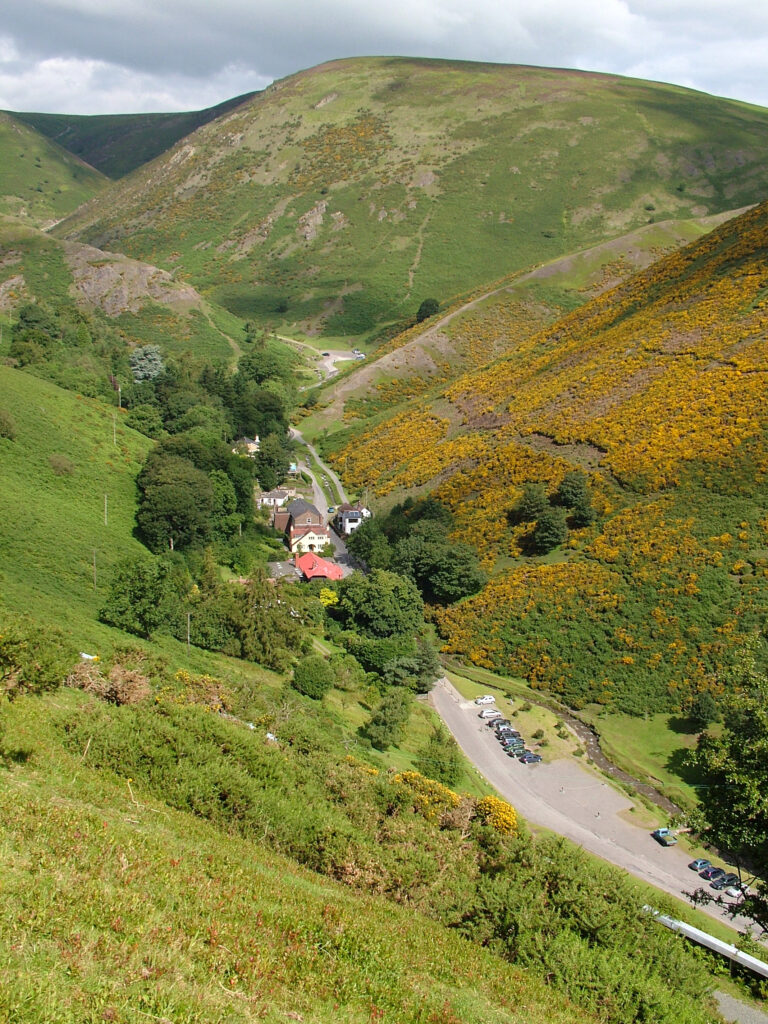
However, I must admit they still look like rain drops to me. The fossils are quite common on the Long Mynd; Alex Liu, one of the researchers working on them, found fossils of Intrites and Beltanelliformis up and down Carding Mill Valley and along Ashes Hollow, the second valley south of Carding Mill, often simply in bits of shale lying along the path. But he’s a palaeobiologist, and used to looking for dimpled bits of rock. To get a better idea of what to look for, head to the National Trust Visitor Centre in Carding Mill Valley, where an example of this sort of fossil is on display in the café – it’s been relabelled, ‘Meet the ancestors.’
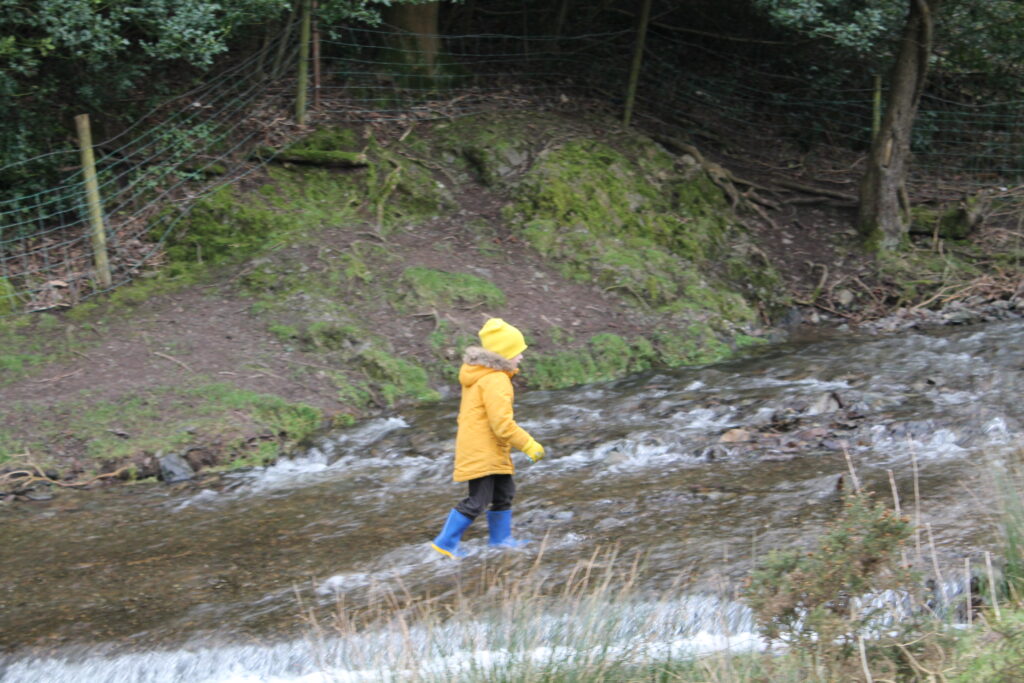
I asked Alex how he knew these marks were really caused by living creatures, since the fossilised impressions appear to show a young earth suffering from a bad attack of chicken pox – exactly how you’d expect muddy ground to look after a heavy shower.
With considerable patience, Alex explained that these couldn’t be rain marks because we now know these rocks were deposited under water; many marks are too small to be rain prints; and they don’t cut or cross each other, but rather grow into and abut the surrounding structures in the way that living creatures like bacteria do today. And, what’s more, identical structures have been found in rocks of the same age in St John’s, Newfoundland, and similar structures are seen in Charnwood Forest, Leicestershire.
560 million years ago, when these rocks were formed, the Atlantic Ocean didn’t exist, and Newfoundland, Shropshire and Leicestershire were close, under-sea neighbours. Alex went on to say that Shropshire was then a long way from its present location, most likely lying just outside the Antarctic Circle at about 60 degrees south.

Huge volcanoes erupted and their outpourings form the hills that lie to the east of the Long Mynd: Caer Caradoc, Ragleth Hill, The Lawley and, further to the north-east, The Wrekin, which is the first hill visitors usually see when driving into Shropshire on the M54 and the one shedding its leaves onto the Severn according to A. E. Housman (‘On Wenlock Edge the wood’s in trouble;/His forest fleece the Wrekin heaves;/The gale, it plies the saplings double,/And thick on Severn snow the leaves’). The ash and rock worn off these volcanic mountains was washed into seas and estuaries, forming the sediments that settled into the mudstone that today forms the Long Mynd.
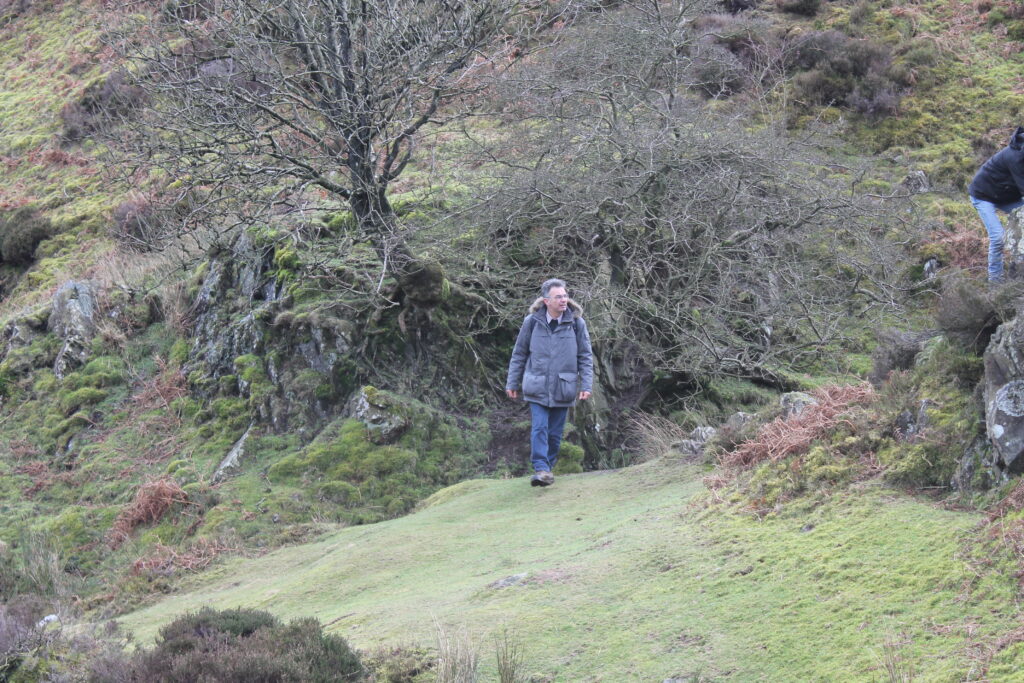
Still feeling a little light headed from the dizzying vistas of time laid out to me, I walked out into Carding Mill Valley and looked up at its steep, heather covered flanks. There was once a mill here that, as the name tells, carded sheep’s wool – the building was later converted rather unsympathetically into flats. But by the late 19th century nearby Church Stretton and its necklace of hills were being marketed to Victorian day trippers as ‘little Switzerland’, complete with requisite spa (although the requisite liquid for taking the waters had to be transported in from Wales). On arriving in Carding Mill Valley some of the visitors would pay the local urchins a penny to race up the valley sides. We set off at a more leisurely pace.
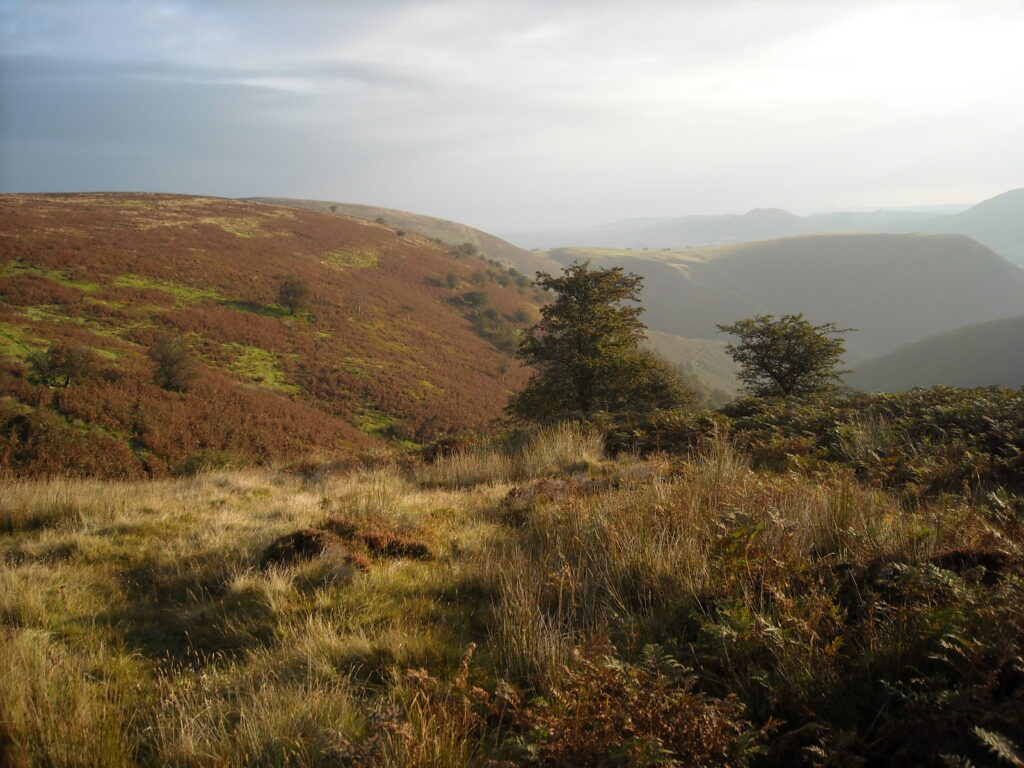
My son, Theo, wrapped up against the winter wind, accompanied me up the valley. The Long Mynd is deeply fissured on its eastern flank, the steep valleys (or batches as they’re known locally) draining the rain driven before the prevailing wind. In comparison, the mountain’s western slopes are relatively smooth and, since they are largely free from trees, they are perfect for gliding. Amy Johnson, the famous aviator of the early 20th Century who was the first woman to fly solo from Britain to Australia, practised above Wild Moor and Pole Bank.
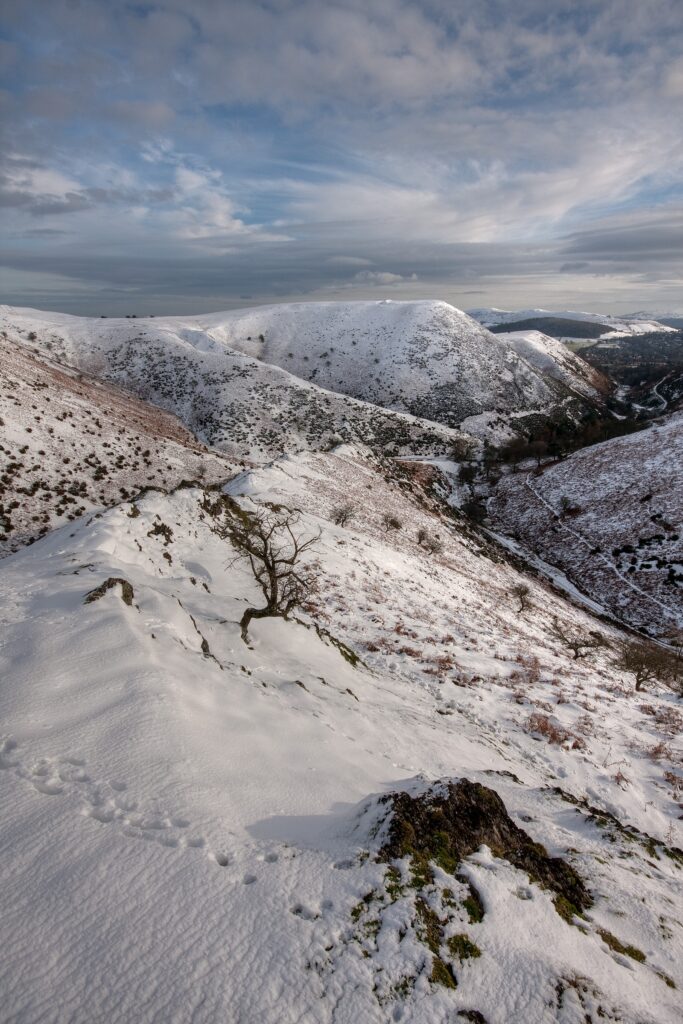
The snow, which had started in a desultory fashion as we began, grew thicker as we climbed up Light Spout Hollow. The world whitened as we went, until it opened out, and out, and out, into a formless, shifting, blowing greylight. We had reached the exposed and undulating whaleback of the long mountain and come into a world transformed. Living in a world of change, our entire perceptual and cognitive apparatus is geared towards providing us with some sort of constancy, but that apparatus fails utterly under the white. Heather becomes a strangely unliving lace, a bleached out coral in a cold and motile sea. Fence pillars are measured out on their verticals by the regular spacing of ice flakes, each one standing apart from its neighbours, each and every one a marvel of involuting intricacy. We walked in a middle space and centre time, abysses of time beneath our feet, worlds within worlds within worlds before our eyes; the snow blowing before the wind.
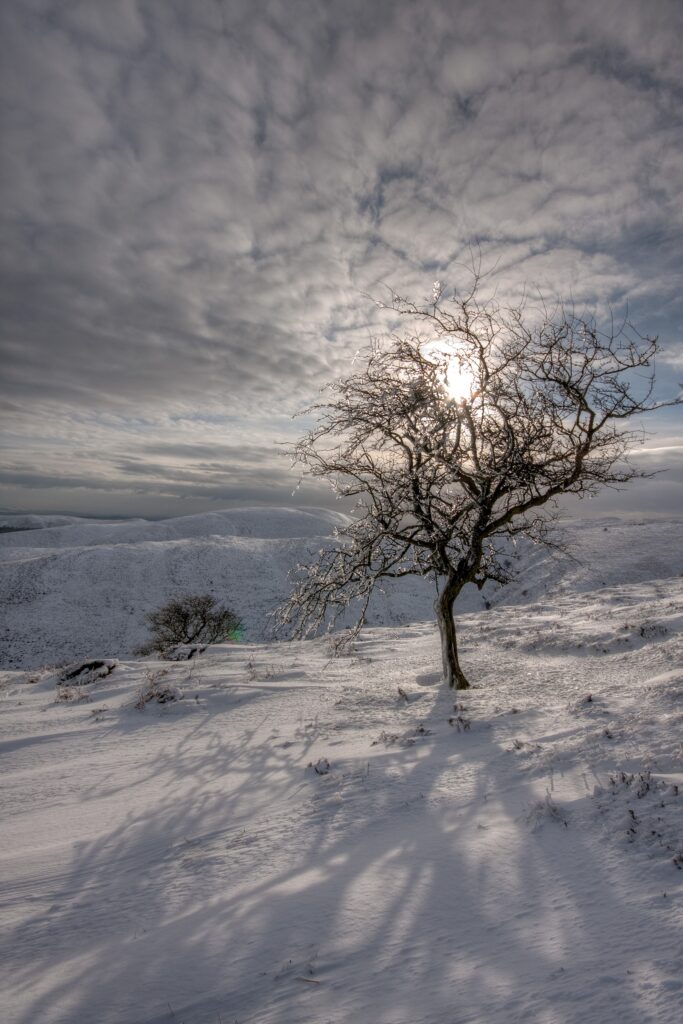
Theo was beginning to look like a mobile snowman, in need of wipers for his spectacles. We pushed on, towards a distant shadow that resolved into three ponies standing heads down, bottom to the wind. Roughly two dozen wild ponies live on the Long Mynd, descendants of ponies bred for lives in the pits. Zeno himself would have been impressed by their stoicism.
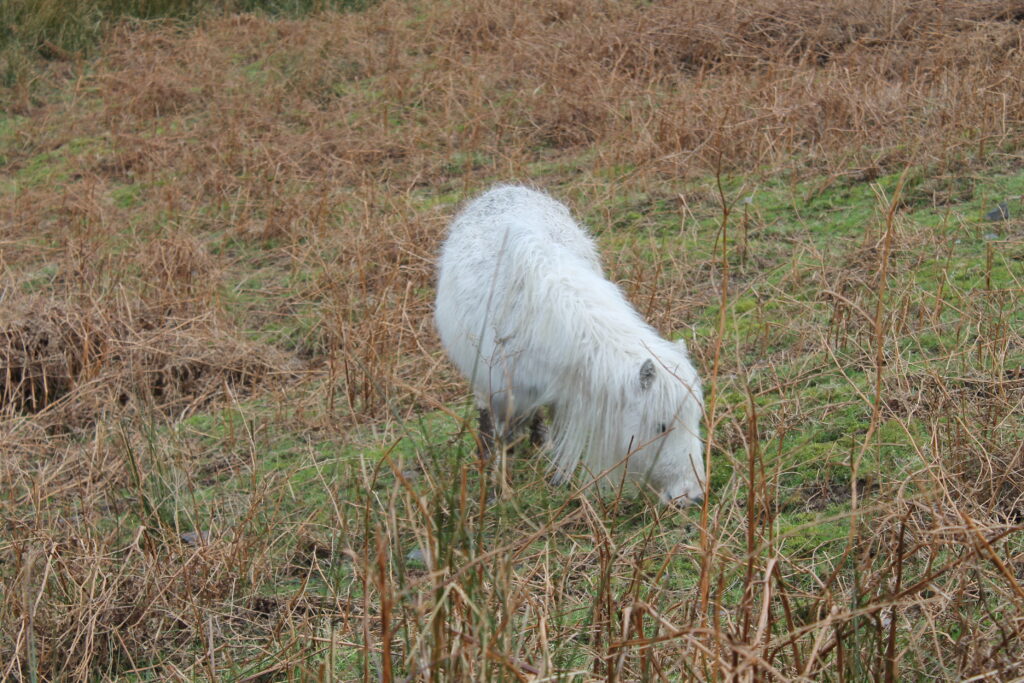
Winding back down into the valley, we passed the icing line. Above, the world was white, dangerously blessed, but below colours returned, a car drove down a clear road and life continued as normal. We walked into the café like creatures of dream, frost flaked ghosts. A woman and boy looked up and for a moment I didn’t recognise my wife and younger son and they didn’t recognise me.
Shift.
Worlds settle. We’re back.
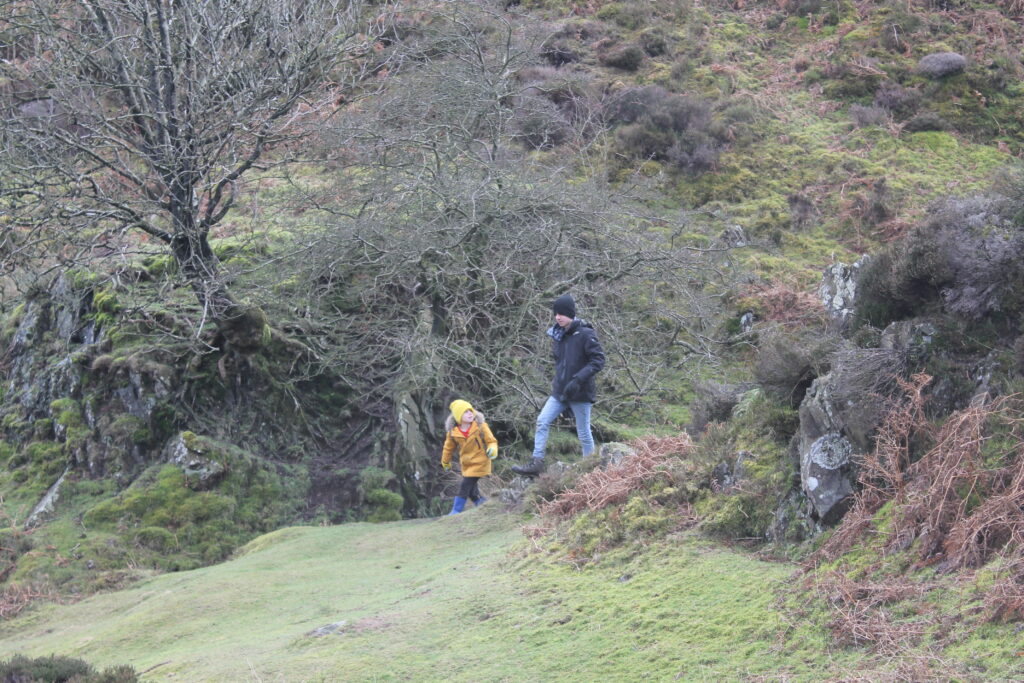
0 Comments